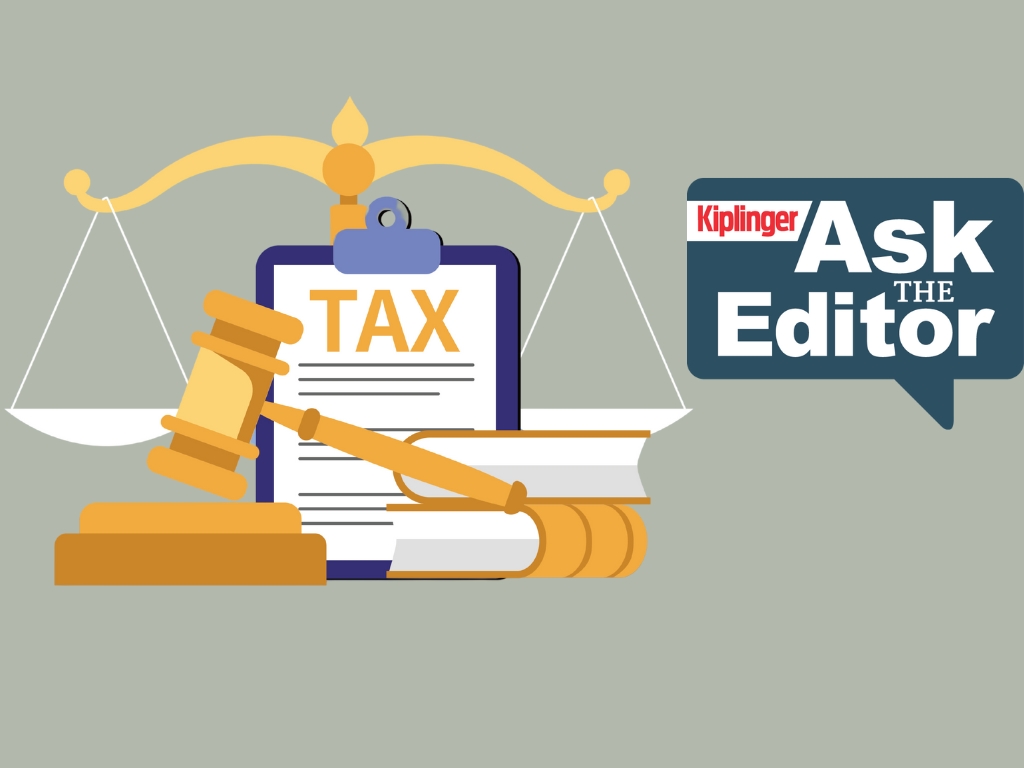Retiring Early? A New IRS Rule Could Mean More Money in Your Pocket
Those younger than 59½ can now withdraw more from IRAs, 401(k)s or other qualified retirement accounts without a 10% early withdrawal penalty. It’s all because the IRS changed how to calculate Substantially Equal Periodic Payments. But beware of the risks.


The Great Resignation is translating into a flood of early retirements. When the decision to retire has been made suddenly, there are challenges and roadblocks that can cost the retiree dearly. Many of these challenges are dependent on what age you are when you leave employment. For example, you can’t access your Social Security until age 62, and even then, your benefit will be at a steep discount that you’re saddled with for life. Further, you can’t sign up for Medicare until you’re age 65.
Perhaps the biggest age challenge for many early retirees is that you can’t withdraw your own retirement savings until you’re age 59½. Unless you qualify for one of the exceptions, any withdrawal from your IRAs and 401(k) accounts before this magic age will result in a 10% tax penalty on each withdrawal.
The good news is that a January pronouncement from the IRS will make this penalty a little less troublesome. Retirees who are leaving the workforce before age 59½ will now be able to take out more money each year without incurring a 10% hit. And these changes are all because of esoteric assumptions the IRS uses in calculating mortality and interest rates

Sign up for Kiplinger’s Free E-Newsletters
Profit and prosper with the best of expert advice on investing, taxes, retirement, personal finance and more - straight to your e-mail.
Profit and prosper with the best of expert advice - straight to your e-mail.
Substantially Equal Periodic Payments Basics
Here’s how it works. One of the key exceptions to the 10% penalty rule is that you can withdraw from your qualified accounts (think 401(k), IRA, Roth IRA, etc.) before age 59½ if you take “Substantially Equal Periodic Payments” (SEPPs). This is often referred to as the “72(t) exception.” You can choose one of three different methods to determine how much to withdraw and still stay within SEPP rules: The required minimum distribution option (which generates a lower initial withdrawal than the other two methods), the fixed annuitization method and the fixed amortization method.
With the fixed amortization method, your annual payment is determined using your life expectancy and a permitted interest rate. Because of the recent changes the IRS made, this calculation offers a significant increase in the amount that can be withdrawn each year without incurring the 10% penalty. Here’s why: The “reasonable interest rate” permitted for calculating the benefit before the IRS made its changes was based on low interest rate tables that were published monthly, for example 1.52% was the rate in December. Under the new ruling the floor rate now is 5%. For the individual seeking to maximize how much they can withdraw penalty-free each year before 59½, this offers a much higher payment.
In general, once you figure out how much you’re going to withdraw, you have to stick with the method you’ve chosen for a period of five years or until you turn 59½, whichever comes later. The only exception is that you can make a one-time switch from one of the other two methods to the RMD method, which will normally result in a smaller payment. This might come in handy if you go back to work and no longer want to maximize the amount you’re withdrawing.
An Example
If you’re an early retiree, it’s likely you want to know how to maximize the income you can take from your retirement accounts without a penalty. Nationally known tax authority Bob Keebler provides this example:
Mary is a 50-year-old divorcee who has reached $1 million in her 401(k) account, her retirement savings goal. She would like to retire, and she understands that if she uses the SEPP rule, at age 50 she’s committing to take these payments for approximately 10 years. She wants to use the calculation most favorable to her in terms of maximizing her withdrawal. Between the three methods, the fixed amortization method provides the largest permitted withdrawal.
Had she started her payments in December, before the new IRS rule, primarily because of the 1.52% interest rate her payment would have been $36,122. Applying the new rule however, with the 5% floor interest rate, her payment increases significantly to $60,312. There’s more that goes into the black box used in these calculations, but the net effect is a big change in what she can withdraw.
What’s the Catch with These Payments?
Popular IRA expert Ed Slott tends to discourage the use of SEPP withdrawals. He cautions that a lot of things can go wrong with this as a strategy for paying for your early retirement. He has a point.
- First, recognize that while these payments, properly calculated and executed, avoid the 10% penalty, they are still subject to ordinary income taxation.
- Further, once you’ve committed to taking these distributions, with few exceptions, you’re obligated to stick with the withdrawals. Even if Mary at some point decides she doesn’t want these taxable payments, she has to take them until she reaches age 59½ – or suffer the 10% penalty on all her payments. While this sounds easy enough to live with, the reality is that over the years, it’s easy to make a mistake or miss a date. The result is a penalty on the whole transaction.
- In my mind, however, the biggest risk with SEPPs is that you’re committing to a strategy that may run out your retirement savings before you run out of oxygen. Just because you can now withdraw more each year doesn’t mean you can afford to draw that much. For example, if Mary withdraws $60,312 each year during the SEPP period, she will likely have depleted well over half of her $1 million retirement savings by the time she reaches age 60. She may live for decades longer, yet she will be starting her 60s with less than $500,000.
Proceed With Caution
Early retirement is an exciting opportunity for many, and the pandemic has hastened this move toward freedom from employment. Helping this trend for those retiring while still in their 50s, the IRS allows them to get at far more of their retirement savings penalty free. But proceed with caution. If you’re going to use the SEPP strategy to access your qualified retirement savings, be smart. Get your numbers right (there’s plenty of software out there to help do the calculations), follow-through on your withdrawals each year, and don’t put yourself in the situation of running out of funds later in your retirement.
Profit and prosper with the best of Kiplinger's advice on investing, taxes, retirement, personal finance and much more. Delivered daily. Enter your email in the box and click Sign Me Up.

Steve Parrish, JD, RICP®, CLU®, ChFC®, RHU®, AEP®, is an Adjunct Professor of Advanced Planning and Co-Director of the Retirement Income Center at The American College of Financial Services. His career includes years spent as a financial adviser, attorney and financial service company executive. He focuses on law, estate planning, taxes and financial strategies that can help enable a successful retirement.
-
 Ask the Editor — Tax Questions on the New Senior Deduction
Ask the Editor — Tax Questions on the New Senior DeductionAsk the Editor In this week's Ask the Editor Q&A, we answer tax questions from readers on the new $6,000 deduction for taxpayers 65 and older.
-
 These Summer 2025 Back-to-School Tax-Free Weekends Start Now
These Summer 2025 Back-to-School Tax-Free Weekends Start NowSales Tax Over a dozen states offer back-to-school shoppers a sales tax holiday this summer.
-
 Do You Need Flood Insurance? I'm an Insurance Expert, and Here's Where You Can Get It
Do You Need Flood Insurance? I'm an Insurance Expert, and Here's Where You Can Get ItStandard homeowners insurance does not cover flood damage, so you might need separate flood insurance, which you can get either through FEMA or private companies. Here are the details.
-
 I'm an Investment Professional: These Are the Three Money Tips I'm Giving My College Grad
I'm an Investment Professional: These Are the Three Money Tips I'm Giving My College GradCollege grads can help set themselves up for financial independence by focusing on emergency savings, opting into a 401(k) at work (if it's offered) and disciplined, long-term investing.
-
 New SALT Cap Deduction: Unlock Massive Tax Savings with Non-Grantor Trusts
New SALT Cap Deduction: Unlock Massive Tax Savings with Non-Grantor TrustsThe One Big Beautiful Bill Act's increase of the state and local tax (SALT) deduction cap creates an opportunity to use multiple non-grantor trusts to maximize deductions and enhance estate planning.
-
 Know Your ABDs? A Beginner's Guide to Medicare Basics
Know Your ABDs? A Beginner's Guide to Medicare BasicsMedicare is an alphabet soup — and the rules can be just as confusing as the terminology. Conquer the system with this beginner's guide to Parts A, B and D.
-
 I'm an Investment Adviser: Why Playing Defense Can Win the Investing Game
I'm an Investment Adviser: Why Playing Defense Can Win the Investing GameChasing large returns through gold and other alternative investments might be thrilling, but playing defensive 'small ball' with your investments can be a winning formula.
-
 Five Big Beautiful Bill Changes and How Wealthy Retirees Can Benefit
Five Big Beautiful Bill Changes and How Wealthy Retirees Can BenefitHere's how wealthy retirees can plan for the changes in the new tax legislation, including what it means for tax rates, the SALT cap, charitable giving, estate taxes and other deductions and credits.
-
 Portfolio Manager Busts Five Myths About International Investing
Portfolio Manager Busts Five Myths About International InvestingThese common misconceptions lead many investors to overlook international markets, but embracing global diversification can enhance portfolio resilience and unlock long-term growth.
-
 I'm a Financial Planner: Here Are Five Smart Moves for DIY Investors
I'm a Financial Planner: Here Are Five Smart Moves for DIY InvestorsYou'll go further as a DIY investor with a solid game plan. Here are five tips to help you put together a strategy you can rely on over the years to come.